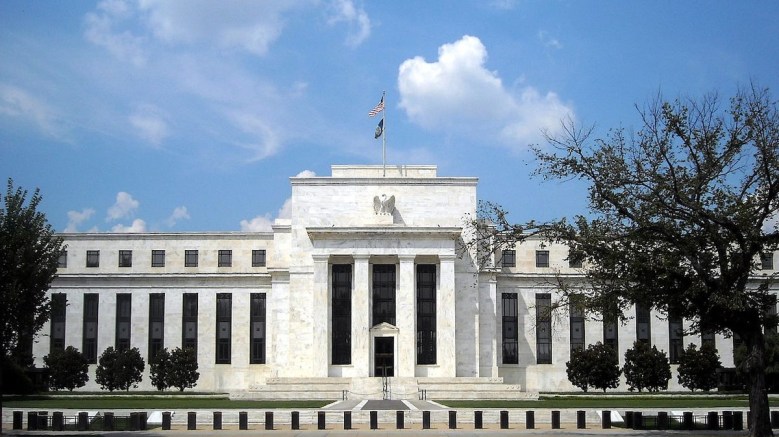Business
Fed Cuts Interest Rates Amid Data Void from Government Shutdown

The Federal Reserve has reduced interest rates by a quarter point to address economic uncertainty exacerbated by the ongoing government shutdown. The decision, made during the monetary policy meeting that concluded on October 29, 2023, reflects the challenges faced by the Fed in the absence of critical government data. With federal offices closed since October 1, the release of key economic statistics, including employment figures and inflation reports, has been severely limited.
Federal Reserve Chair Jerome Powell and the voting members of the Federal Open Market Committee (FOMC) typically rely on a wealth of public data to guide monetary policy. However, with the shutdown preventing access to crucial reports, the central bank has found itself navigating economic decisions with incomplete information. As Powell noted, this situation has forced the Fed to rely more heavily on alternative data sources, which may lack the robustness of government statistics.
The Fed’s dual mandate is to stabilize prices and promote full employment. In pursuing these goals, Powell and his colleagues must carefully balance domestic inflation, employment trends, and external factors, including the global tariff policies advocated by Donald Trump.
While the Fed has traditionally depended on government data, the current shutdown has led to the cancellation of vital reports on employment, job openings, and retail sales. As a result, the Fed has turned to alternative data sources to gauge the health of the economy. For instance, Torsten Slok, chief economist at Apollo Asset Management, has provided insights from various private data sources, including ISM PMI reports and consumer spending data from Bloomberg.
Powell has acknowledged that while alternative data can supplement government statistics, it cannot replace them entirely. He stated, “The private data, the alternative data that we look at is better used as a supplement for the underlying governmental data, which is the gold standard.” Nevertheless, the Fed’s reliance on these alternative sources has been complicated by the suspension of data sharing from payroll processor ADP, which had previously provided private sector payroll information.
Despite these challenges, the Federal Reserve has its own internal resources for economic analysis. The central bank maintains a nationwide network of contacts and conducts its own research, enabling it to gather insights even when government agencies are not functioning. The Fed’s Beige Book, which is published eight times a year, provides qualitative information about economic conditions across the country. The latest report, released on October 15, indicated a slight decline in consumer spending, particularly among lower- and middle-income households facing rising prices and economic uncertainty.
Consumer sentiment is another indicator the Fed monitors closely. Although official unemployment rates are unavailable due to the shutdown, historical data suggests that consumer confidence can foreshadow job losses. Recent consumer confidence reports indicate heightened anxiety among Americans regarding job security over the next six months, which may lead to an increase in the unemployment rate once data resumes publication.
Inflation remains a pressing concern, with both private and market-based data suggesting that price increases are likely to persist near the Fed’s target of 2%. The Fed’s decision to cut interest rates comes amidst this backdrop of uncertainty, as Powell and the FOMC weigh the potential risks of inflation against a weakening labor market.
At the September monetary policy meeting, the FOMC voted to cut benchmark interest rates by 25 basis points, marking the first reduction since December 2022. Following the recent cut on October 29, markets are anticipating another quarter-point reduction in December, which would bring rates down to a range of 3.5% to 3.75%. Such a move could provide a necessary boost to the labor market, but uncertainties remain regarding future rate adjustments.
During the latest meeting, Powell cautioned that there is no guarantee of a further rate cut in December, emphasizing that the absence of government data might warrant a more cautious approach. The FOMC typically shares projections on the benchmark interest rate during its quarterly meetings, with the median projection from September indicating a slight decline to 3.4% by the end of 2026 and further down to 3.1% by the end of 2027.
As inflation pressures continue to mount, Fed officials are tasked with balancing the risks of a weakening labor market against potential inflationary pressures stemming from tariffs, immigration reform, and their own lower interest rates. The ongoing government shutdown adds another layer of complexity to this already challenging economic landscape.
Addressing these multifaceted risks will likely require coordinated efforts beyond the Fed’s monetary policy, including government actions related to immigration, taxation, and spending. The path ahead remains uncertain, with significant implications for the U.S. economy and its recovery.
-

 Lifestyle3 months ago
Lifestyle3 months agoHumanism Camp Engages 250 Youths in Summer Fest 2025
-

 Sports3 months ago
Sports3 months agoDe Minaur Triumphs at Washington Open After Thrilling Comeback
-

 Business4 months ago
Business4 months agoKenvue Dismisses CEO Thibaut Mongon as Strategic Review Advances
-

 Sports3 months ago
Sports3 months agoTupou and Daugunu Join First Nations Squad for Lions Clash
-

 Top Stories4 months ago
Top Stories4 months agoColombian Senator Miguel Uribe Shows Signs of Recovery After Attack
-

 World4 months ago
World4 months agoASEAN Gears Up for Historic Joint Meeting of Foreign and Economic Ministers
-

 Business3 months ago
Business3 months agoOil Prices Surge Following New EU Sanctions on Russia
-

 Health3 months ago
Health3 months agoNew Study Challenges Assumptions About Aging and Inflammation
-

 Entertainment3 months ago
Entertainment3 months agoDetaşe-Sabah Violin Ensemble Captivates at Gabala Music Festival
-

 Entertainment3 months ago
Entertainment3 months agoBaku Metro Extends Hours for Justin Timberlake Concert
-

 Business3 months ago
Business3 months agoU.S. House Approves Stablecoin Bill, Sends to Trump for Signature
-

 Top Stories4 months ago
Top Stories4 months agoRethinking Singapore’s F&B Regulations Amid Business Closures









